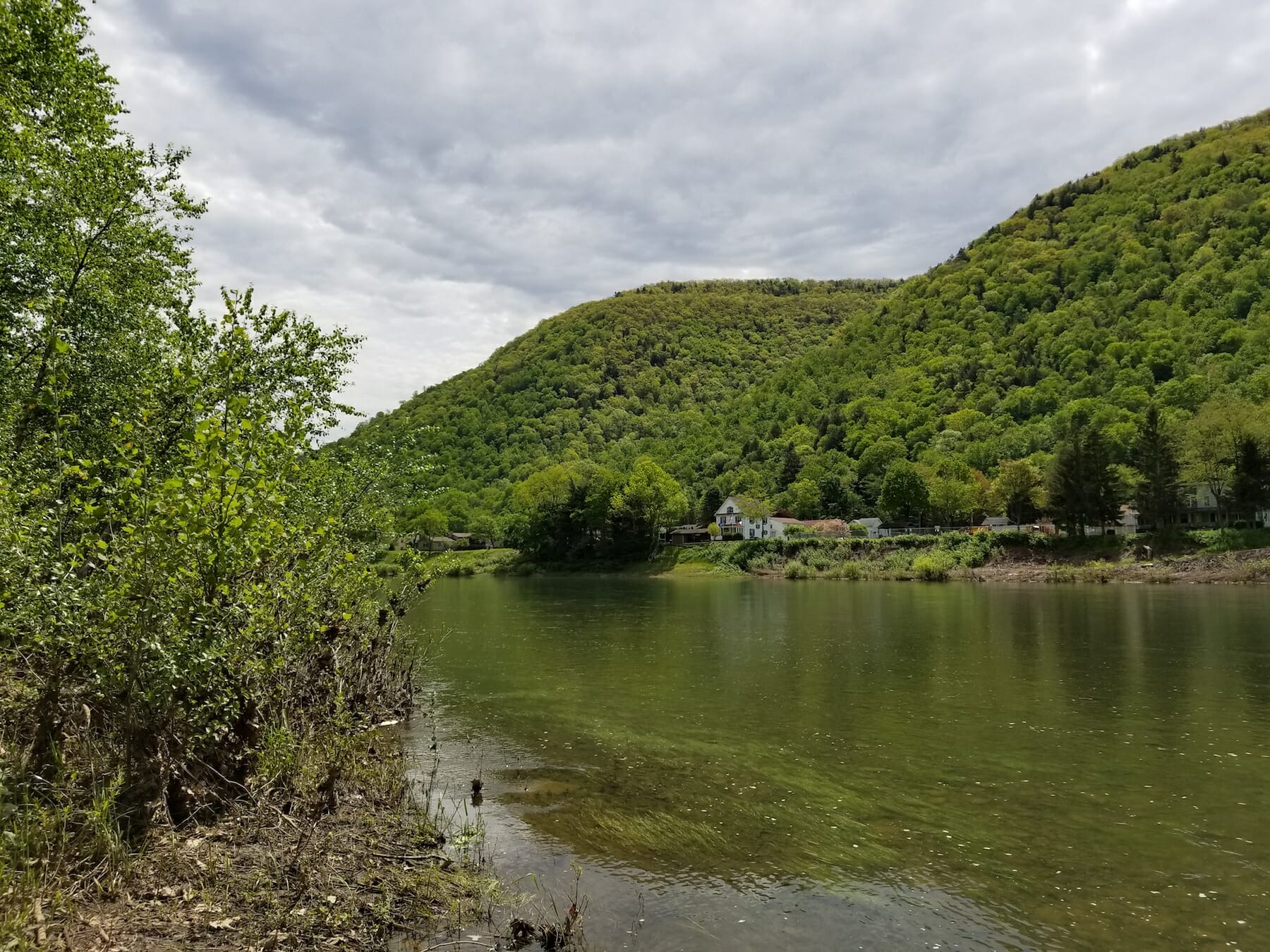By Shawn Rummel
The West Branch Susquehanna drains an area of approximately 7,000 squares miles in north-central Pennsylvania, a watershed that’s double the size of Yellowstone National Park.
Due to the large amount of public land in the basin —more than one-third is state forest, state park, or state game lands — it is a tremendous resource for outdoor recreation. The basin also contains some of the best strongholds of brook trout Pennsylvania. (For more information see the Eastern Brook Trout Conservation Portfolio and Range-wide Assessment)
However, the full potential of the basin has not been realized due to the pollution and suite of other issues from historic poorly regulated coal mining activities. Although coal mining from this region once played an important role in supporting our nation’s westward expansion and strength in fighting world wars, the legacy that remains today is primarily polluted waters from abandoned mine drainage (below).
WB_CooksRun_50_US small.jpeg

Trout Unlimited is among the many groups working to address AMD. Early surveys of the health of streams in the watershed show that the work is paying dividends.
AMD is the cause for approximately 60 percent of the pollution to the West Branch Susquehanna River and its tributaries. Over 1,100 miles of waterways within the basin are listed as impaired due to AMD by the Pennsylvania Department of Environmental Protection (DEP), making the West Branch Susquehanna River basin one of the most polluted basins in the nation.
Over the past two decades, reclamation and remediation of AMD in the West Branch Susquehanna has become a priority for numerous conservation organizations and government agencies, including Trout Unlimited. Subsequently, millions of state, federal and local dollars have been utilized for AMD remediation.
As a result of these efforts, numerous AMD remediation projects have been implemented throughout the watershed to improve water quality and biological conditions. The realization of these projects has been a concerted effort among state and federal agencies, non-governmental organizations, county conservation districts, private industry, philanthropic foundations, local watershed groups, and concerned citizens.
However, despite the vast amount of resources spent by these entities, there had never been a concerted effort to quantify and document the resulting improvements at the watershed scale. In recognition of this need, TU completed the initial West Branch Susquehanna Recovery Benchmark Project with funding from a 2008 DEP Growing Greener grant. (For the full report, click HERE.)
In brief, results from this initial study indicated significant improvements in both water quality and biological conditions compared to historical conditions. However, as described in the final report, the improvements observed during the 2009 sampling effort should be cautiously celebrated as the watershed ecosystem is only in the beginning stages of recovery.
Since the completion of the Recovery Benchmark Project, the groups involved in AMD restoration have continued, and in many cases enhanced, their diligent work, all with the goal of restoring the West Branch Susquehanna River and its many tributaries to their full potential.
Since the sampling was conducted for the original project, at least $30 million has been spent on remediation throughout the watershed, including several large-scale active treatment systems, large abandoned mine land reclamation projects, and smaller scale active and passive AMD treatment systems.
This past summer, with funding from PA DEP’s Growing Greener Program, TU staff in Pennsylvania, along with cooperation from state agencies, conservation districts, other non-profit organizations, and volunteers began an effort to replicate and expand upon the previous study of the watershed.
BearRun small.jpeg

A total of seven field crews covered 110 sample sites in five days in both May and June to collect water samples throughout the watershed. In addition, habitat evaluations and benthic macroinvertebrates were collected at the sample sites and fishery communities are being assessed at selected sites by the Pennsylvania Fish and Boat Commission.
We are still in the very early days of this project and the data from the labs is being compiled and analyzed, but the goal is to understand how remediation efforts have positively impacted the watershed and to assess where future efforts may be needed. For example, surface reclamation of abandoned mine lands reduces significant amounts of sediment runoff, can pay huge dividends toward the goal of eliminating sediment pollution throughout the Chesapeake Bay watershed.
The project offers an exciting opportunity to determine how multiple small-scale restoration efforts accumulate into large, watershed-scale changes in water quality and the biological communities. The project is slated to be completed in 2019, but there should be no shortage of information to keep you updated on the “West Branch Susquehanna Recovery Benchmark II” project between now and then.
Shawn Rummel, Ph.D. is the field and research manager for Trout Unlimited’s Pennsylvania Coldwater Habitat Restoration Program. He is based in Lock Haven, Pa.



